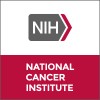
HAIC Plus Lenvatinib and PD-1 Antibody Versus HAIC Plus Lenvatinib for Advanced HCC
Hepatocellular CarcinomaThe purpose of this study is to evaluate the efficacy and safety of hepatic arterial infusion chemotherapy of oxaliplatin, 5-fluorouracil and leucovorin plus lenvatinib and programmed cell death protein-1 antibody compared with lenvtinib Alone in patients with hepatic arterial infusion chemotherapy of oxaliplatin, 5-fluorouracil and leucovorin plus lenvatinib for advanced hepatocellular carcinoma (HCC)

Lenvatinib Plus PD-1 Antibody for Intermediate-stage HCC Beyond Up-to-seven Criteria
Hepatocellular CarcinomaThe purpose of this study is to evaluate the efficacy and safety of lenvatinib combined with PD-1 antibody for patients with intermediate-stage hepatocellular carcinoma (HCC) beyond up-to-seven criteria

Sorafenib and Bavituximab Plus SBRT in Unresectable Hepatocellular Carcinoma
HepatoCellular CarcinomaUnresectable HepatoCellular Carcinoma1 moreThis study involves a course of radiation to up to 5 tumors in the participant's liver followed by systemic therapy. (Treatment using substances that travel through the bloodstream, reaching and affecting cells all over the body.) The type of radiation is called stereotactic body radiation therapy (SBRT). The purpose of this study is to compare the effects, good and/or bad, of different doses of SBRT given along with the systemic therapies, sorafenib and bavituximab. The researchers want to see which dose of radiation will work best in stimulating the immune response and provide local control to the participant's liver. The usual treatment for hepatocellular carcinoma that is unresectable can be transarterial therapy, sorafenib alone and/or clinical trial.

Study to Evaluate Immunological Response to PD-1 Inhibition in Squamous Cell Carcinoma of the Head...
Squamous Cell Carcinoma of the Head and NeckThis is a single-center cross-sectional imaging and correlative biomarker study in patients with Squamous Cell Carcinoma of the Head and Neck (SCCHN). Cohort 1 will be patients with unresectable or metastatic SCCHN cancer receiving standard of care (SOC) anti-PD-1 treatment and Cohort 2 will be neoadjuvant study participants who will receive one dose of anti-PD-1 treatment prior to tumor resection or radiation. Blood sampling and tissue biopsies will be collected from both cohorts and both cohorts will undergo two whole body PET(Positron Emission Tomography)/CT(Computed Tomography) imaging with [18F]F-AraG. First scan prior to initiating anti-PD-1 treatment and second scan post initiation of anti-PD-1 treatment in Cohort 1 and prior to tumor resection or radiation in Cohort 2

Evaluation of Pathway Modulation by Raf, MEK, & Kinase Inhibitors
Metastatic CancerMelanoma7 moreThis is a pilot study designed to evaluate the cutaneous effect of systemic inhibition of the tyrosine kinase pathway in the presence or absence of solar simulated light exposure. A maximum of 45 subjects will be accrued into the overall study we anticipate approximately 25 patients in the Raf inhibitor group and 10 patients each into the Tyrosine Kinase and MEK inhibitor arms of the study.

Radiotherapy Versus no Intervention in Adult Patients With Hepatocellular Carcinoma Not Eligible...
Hepatocellular CarcinomaLiver transplantation (LT) represents the best treatment for patients with selected, early stage hepatocellular carcinoma (HCC). Due to the gap between the number of patients on the waiting list and the available donors, patients with HCC wait ~1 year to be transplanted. While waiting, 25-30% of patients need to come off the transplant list due to tumor progression beyond transplant criteria (extrahepatic disease, vascular invasion or increase in tumor burden beyond enlistment criteria). To try to avoid this progression, patients are treated while waiting with "bridging therapies", mainly transarterial chemoembolization (TACE) and ablation. Around 30% of patients are not eligible for these treatments (.e.g. due to poor liver function). Stereotactic body radiotherapy (SBRT) has been shown to be an effective treatment for advanced HCC in primarily small, single institutional studies and its safety has been reported in cirrhotics. SBRT could be used in patients not eligible to TACE or ablation as a bridge to LT reducing the risk of progression in the waiting list. This study will evaluate if patients with liver cirrhosis and HCC benefit from receiving SBRT while awaiting LT. Patients will be randomized to a treatment arm where they will receive SBRT as a bridge therapy or to a no intervention arm. Outcomes prior and post to transplant will be performed to evaluate the differences between both arms: proportion of patients that do not drop-out of the list (are transplanted), liver decompensation while waiting, perioperative measures in those that are transplanted, time to transplant or drop-out, overall survival, disease-free survival in those that are transplanted in a population of about 330 patients across all sites.

Study of Oral cMET Inhibitor INC280 in Chinese Patients With EGFR Wild-type Advanced Non-small Cell...
CarcinomaNon-Small-Cell Lung CancerA phase II study to evaluate antitumor activity of oral cMET inhibitor INC280 in adult Chinese patients with EGFR wild-type, advanced non-small cell lung cancer (NSCLC) who have received one or two prior lines of systemic therapy for advanced/metastatic disease as measured by overall response rate (ORR). The study will also evaluate safety and pharmacokinetics of INC280.

Neoadjuvant Pembrolizumab + Epacadostat Prior to Curative Surgical Care for Squamous Cell Carcinoma...
Squamous Cell Carcinoma of the Head and NeckThe KEO study is a single arm phase II trial including 44 patients with T1N1-2B, T2N0-N2B head and neck squamous cell carcinoma (HNSCC) eligible for curative-intent resection (+/- adjuvant therapy), who receive neo-adjvuant pembrolizumab + epacadostat. The primary objective of this study is to determine rate of major treatment effect (MTE) to neoadjuvant pembrolizumab+epacostat immunotherapy in SCCHN compared to historic data with neoadjuvant pembrolizumab alone.

Bexarotene in Preventing Breast Cancer in Patients at High Risk for Breast Cancer
Breast Atypical Ductal HyperplasiaBreast Atypical Lobular Hyperplasia3 moreThis phase I trial studies the side effects and best dose of bexarotene in preventing breast cancer in patients at high risk for breast cancer. Bexarotene belongs to a class of drugs that are called rexinoids, and it may reduce the incidence of breast tumors.

A Phase II Study of ABC294640 as Monotherapy in Patients With Advanced Hepatocellular Carcinoma...
CarcinomaHepatocellularThis is a Phase II study of single agent ABC294640. Patients with advanced hepatocellular carcinoma (HCC) who have experienced tumor progression or unacceptable toxicity on single agent sorafenib will receive ABC294640 500 mg by mouth twice a day continuously. Patients will continue on study drug until the development of progressive disease per modified RECIST, intolerable toxicity, withdrawal of patient consent or other event as outlined in patient discontinuation.
